Liquidity pool refer to an automated market-making system in decentralized finance (DeFi) that enable crypto asset trading without traditional order books.
As conventional financial exchanges face disruption, understanding liquidity pools is crucial. We'll dive into statistics and trends, illuminating the growth, impact, and future of this innovative financial sector.
This rapid expansion has revolutionized trading, yielding benefits like reduced slippage, enhanced market efficiency, and new opportunities for yield farming.
However, challenges such as impermanent loss and smart contract vulnerabilities persist.
As traditional finance increasingly adopts blockchain technology, liquidity pools are poised to play a pivotal role in shaping the future of decentralized markets and democratizing access to financial services.
Data Sources and Methodology
This article combines open-access resources and proprietary data to present accurate, up-to-date statistics and relevant developments in the Money Service Business.
Our methodology involves:
- Aggregating data from government databases, industry reports, and academic publications
- Incorporating exclusive insights from leading industry providers
- Regular updates to reflect the latest information
Key data providers include:
While we strive for accuracy, occurrences in the liquidity pool market are shifting rapidly.
These statistics reflect current patterns and should not be considered permanent facts.
Key Takeaways
- The total volume in DeFi is currently $3.23billion representing 4.75% of the total crypto market.
- Revenue is expected to reach $26.17 billion by Q4 of 2024 and $37 billion by 2028 at an annual growth rate CAGR 2024-2028 of 9.07%.
- The number of users is expected to amount to 22.09 million users by 2028.
- About 50% of liquidity providers experienced impermanent loss exceeding their trading fees.
- As of 2023, about 70% of countries have not yet established comprehensive crypto regulations.
- The tokenized asset market is projected to reach $16 trillion by 2030.
- Early experiments of gamification have shown an increase in user engagement of DeFi up to 49%.
Overview of Liquidity Pool Statistics
Liquidity pools emerged in 2017, driven by the rise of decentralized finance DeFi and the need for automated market-making on blockchain networks.
A liquidity pool refers to a collection of funds locked in a smart contract, enabling trading on decentralized exchanges DEXs without relying on traditional market-making mechanisms.
Since their inception, liquidity pools have rapidly evolved, growing from simple token swaps to supporting more complex financial products like yield farming and synthetic assets.
Key milestones include the launch of Uniswap in 2018 and the subsequent DeFi boom in 2020, which saw a significant increase in total value locked TVL in liquidity pools.
Today, the DeFi market is characterized by a diverse range of liquidity pools, offering different incentives and risk profiles.
Major players include Uniswap, SushiSwap, and Curve Finance, while factors such as market volatility, regulatory scrutiny, and technological advancements continue to shape its trajectory.
With over $40 billion in TVL and projections for continued growth, liquidity pools play a crucial role in the broader DeFi ecosystem, providing liquidity and enabling seamless trading.
This makes them a key area of focus for investors, developers, and regulators aiming to navigate the rapidly evolving landscape of decentralized finance.
Key Statistics
- The global crypto market capitalization is $2.09 Trillion. CoinMarketCap

- The total value locked TVL in DeFi rose from about US$175 billion in Q3 2024 to US$232 billion in Q4 2024, a 32.8% jump. CoinGecko

- Liquidity across the top 12 cross-chain bridges climbed from US$27.8 billion in Q3 2024 to US$35.1 billion in Q4 2024 +26.2%. CoinGecko
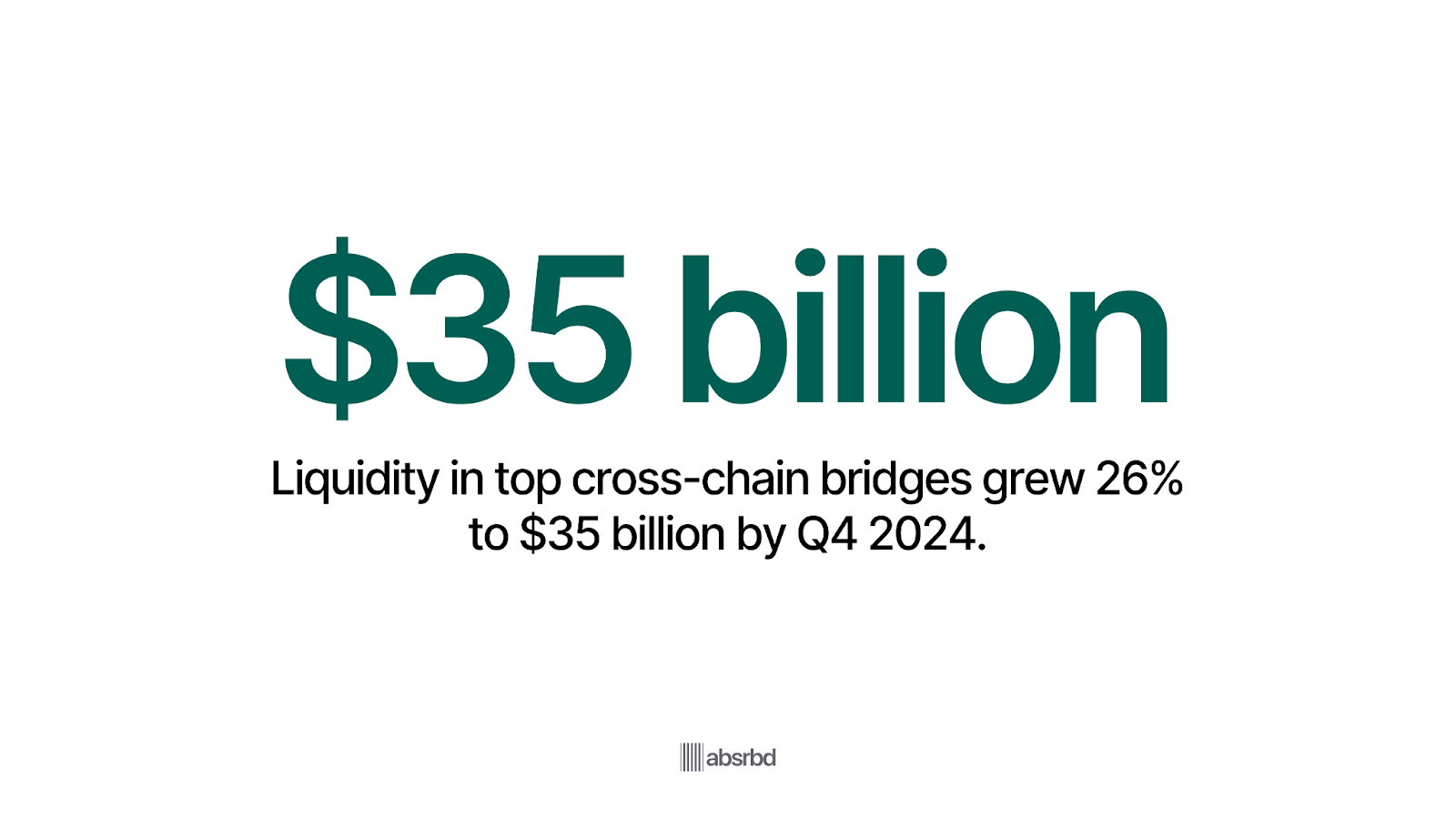
- In 2025, DEX-based liquidity pools reportedly rose 42% year-over-year, with AMMs cited as key drivers. Coinlaw

- A deep analysis found 3,117 liquidity pools across six major DEXs had been affected by “slow liquidity drain” scams, with cumulative losses of more than US$103 million. Arxiv
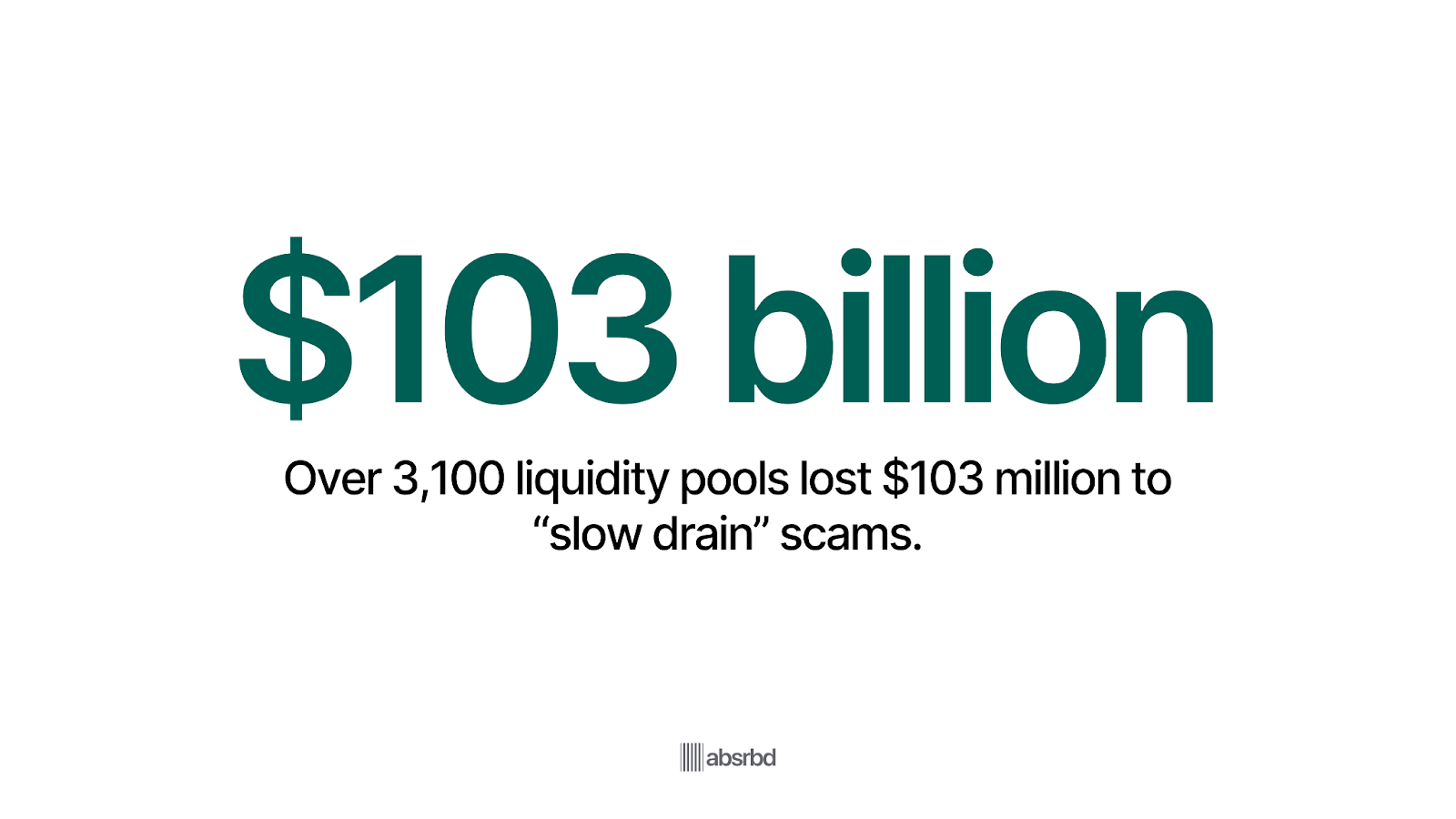
- Stablecoins in DeFi provide $67 billion in liquidity, with growing utility in yield strategies and liquidity provisioning. Coinlaw
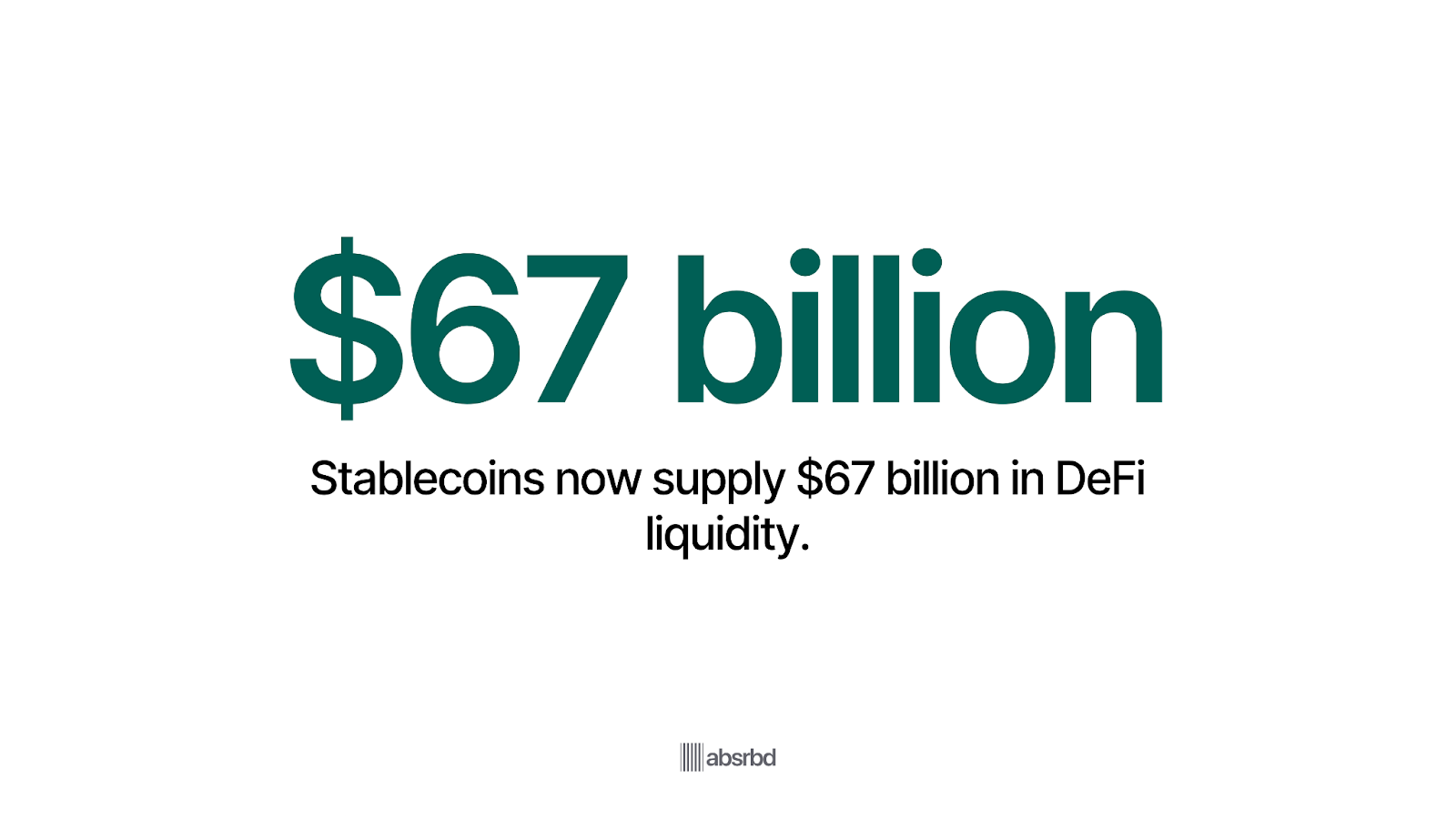
- Among liquidity providers studied on Uniswap and Curve, high-fee pools attracted 58% of liquidity supply, yet only handled 21% of trading volume. Arxiv

- Cross-chain liquidity expanded 47% in 2025, powered by bridges like LayerZero, Wormhole, and Axelar connecting diverse ecosystems. Coinlaw

- As of Q2 2025, the DeFi TVL was about US$123.6 billion, up 41% YoY. AInvest

- The total volume in DeFi is currently $3.23B, 4.75% of the total crypto market 24-hour volume. CoinMarketCap
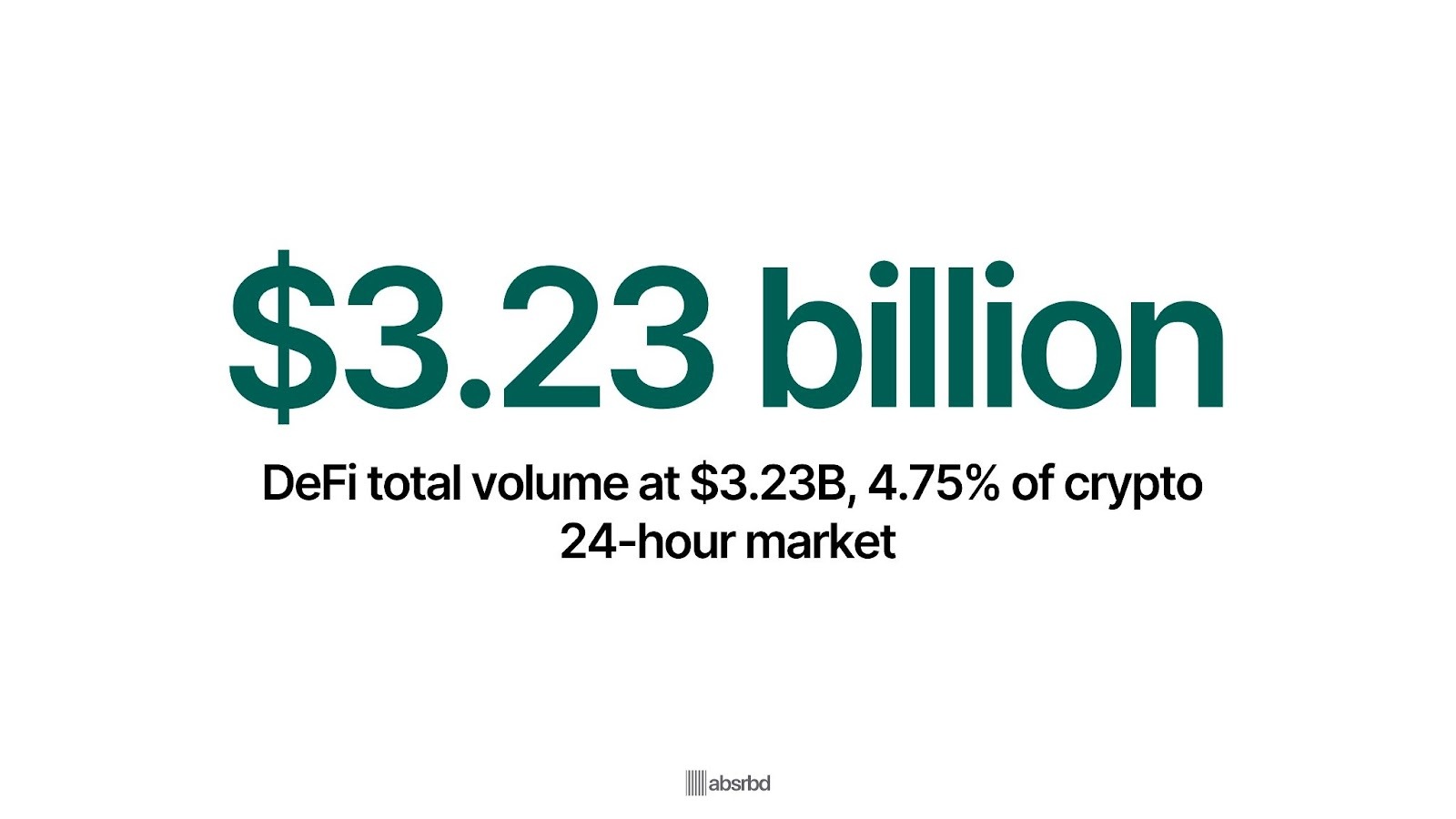
- Revenue in the DeFi market is projected to reach $26.17 billion by Q4 of 2024. Statista

- Revenue is expected to show an annual growth rate CAGR 2024-2028 of 9.07% resulting in a projected total amount of $37 billion by 2028. Statista
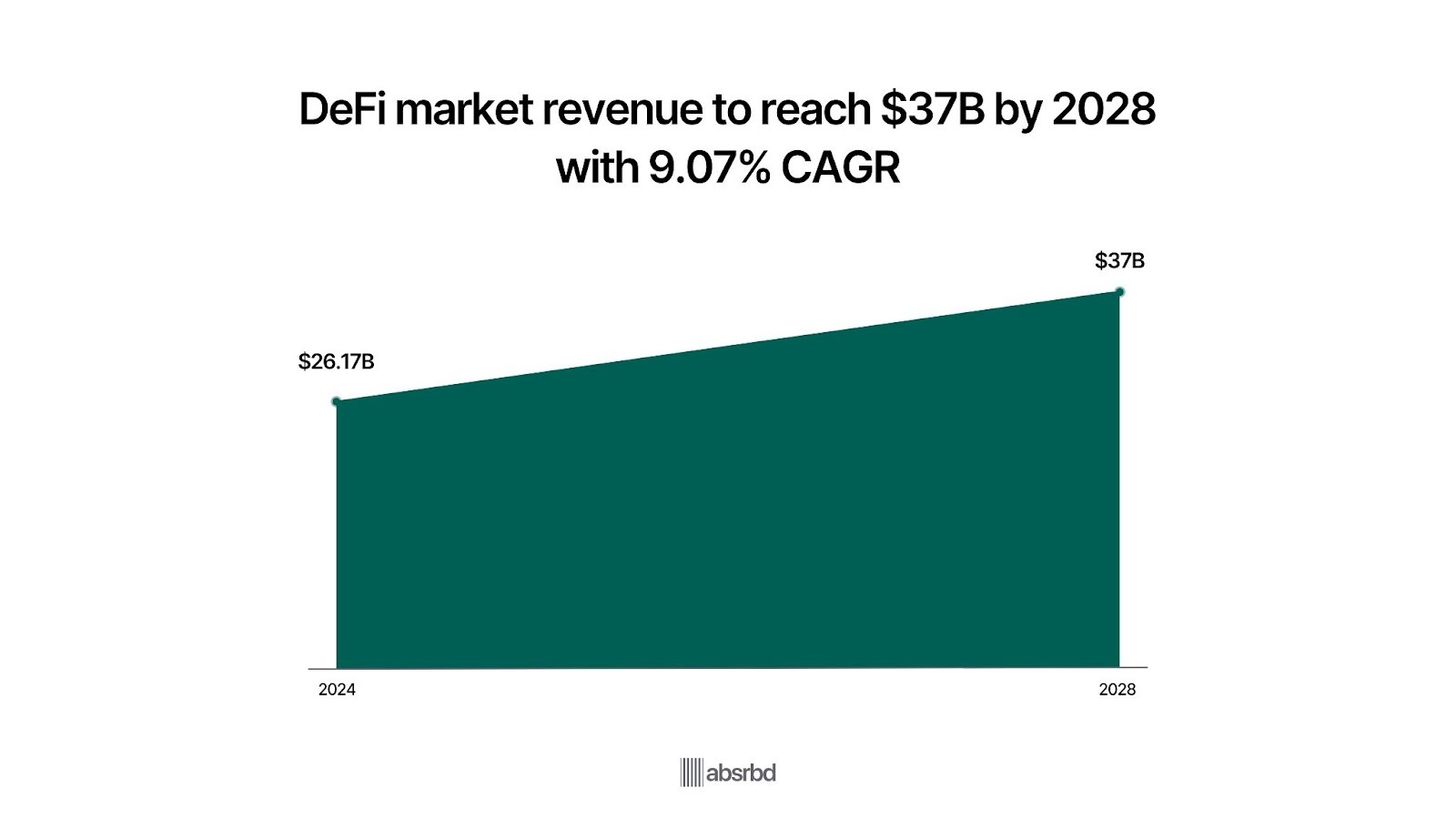
- The average revenue per user in the DeFi market amounts to US$1,378.00 in 2024. Statista

- From a global comparison perspective, it is shown that the highest revenue is reached in the United States $12.5 billion in 2024. Statista
- The number of users is expected to amount to 22.09 million users by 2028. Statista
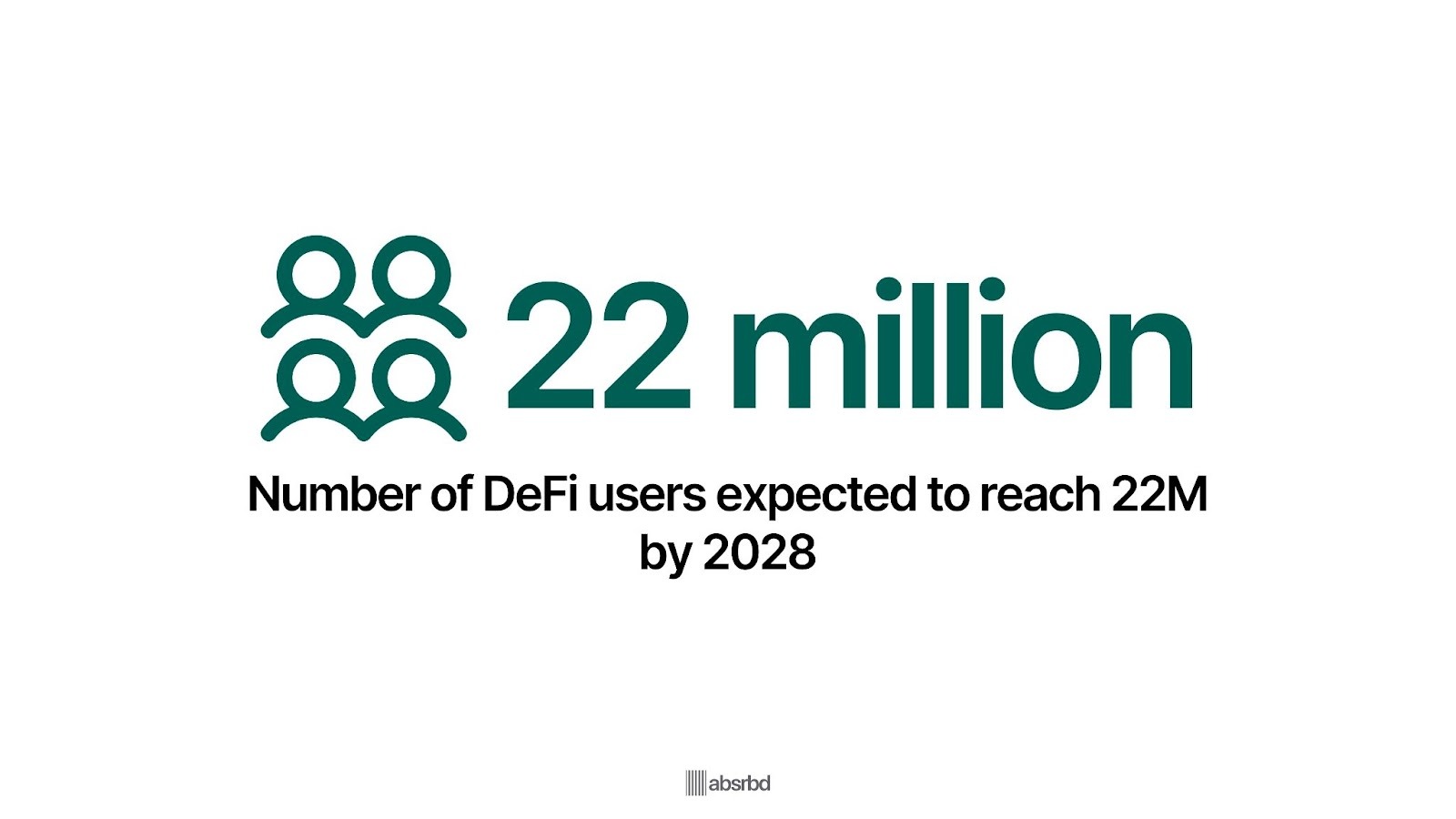
Major Trends Driving Liquidity Pool
The major trends driving liquidity pools, particularly in the context of decentralized finance DeFi and cryptocurrency markets, several key developments are shaping the industry:
Growth in Total Value Locked TVL
The most significant trend in liquidity pools has been the explosive growth in TVL.
According to DeFi Llama, a popular DeFi analytics platform, the TVL across all DeFi protocols which heavily rely on liquidity pools grew from about $1 billion in June 2020 to a peak of nearly $180 billion in November 2021. And currently stands at $82.882 billion. DefiLlama
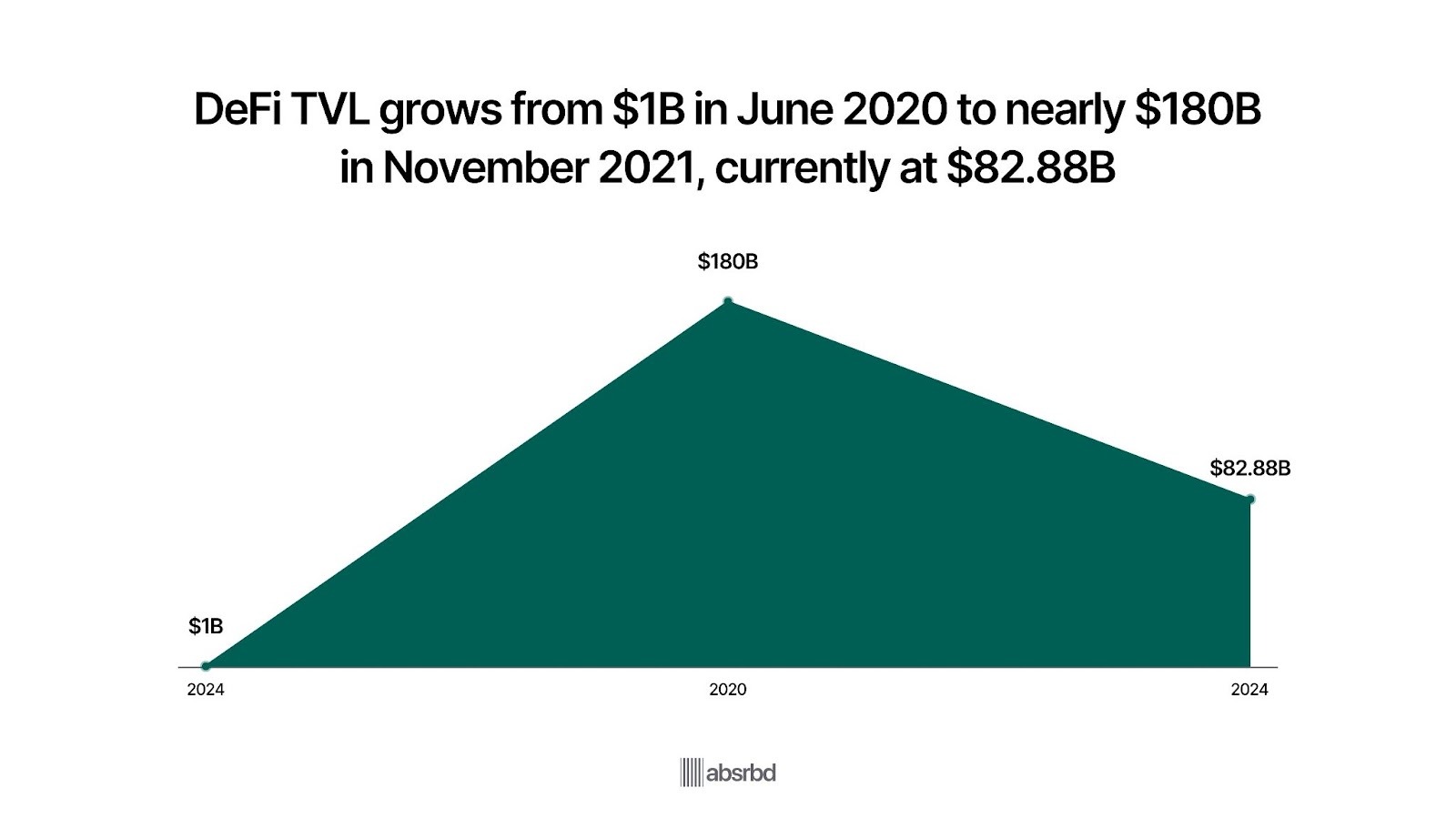
Platforms like Uniswap, PancakeSwap, and Curve Finance have collectively attracted billions in liquidity.
Automated Market Makers AMMs
The development of Automated Market Makers AMMs has revolutionized liquidity provision.
Users of an AMM platform supply liquidity pools with tokens, and the price of the tokens in the pool is determined by a mathematical formula of the AMM itself.
AMMs use algorithms to automatically price assets based on the ratio of tokens in a pool, enabling permissionless trading.
This innovation has made liquidity provision more accessible and attractive to a broader audience.
Concentrated Liquidity
Introduced by Uniswap v3 in 2021, concentrated liquidity allows liquidity providers to allocate their capital within specific price ranges instead of distributing it across the entire price spectrum.
This approach can significantly increase capital efficiency and provide higher returns for liquidity providers.
Uniswap v3 quickly gained traction and surpassed $1 trillion in all-time trading volume by May 2022, highlighting its success and adoption in the decentralized finance market. Forbes
Yield Farming and Liquidity Mining
Liquidity pools have become central to yield farming strategies.
Yield farming involves users farmers staking or lending their cryptocurrency assets in DeFi protocols to earn returns or rewards in the form of additional tokens from the platform.
liquidity mining strategies have incentivized users to provide liquidity to pools by staking tokens in liquidity pools, users can earn additional rewards in the form of governance tokens or interest.
This has driven significant inflows of liquidity, with the current TVL in liquidity pools reaching around $40 billion
For instance, Compound, a leading lending protocol, distributed approximately $800 million worth of COMP tokens to users through liquidity mining programs between 2020 and 2022. Bitstamp
Cross-Chain Liquidity Solutions
The emergence of cross-chain bridges and protocols has enabled liquidity to flow more seamlessly between different blockchain networks.
Projects like Poly Network and Chainlink have developed solutions to facilitate the transfer of assets and liquidity across chains. ChainLink
This trend has expanded the reach and accessibility of liquidity pools.
Institutional Adoption
As the cryptocurrency market matures, institutional investors are increasingly participating in liquidity provision.
Firms like Andreessen Horowitz, Polychain Capital, and Coinbase Ventures have invested heavily in DeFi protocols and liquidity pools.
For example, in 2022, JPMorgan executed its first DeFi trade on a public blockchain using a modified version of the Uniswap protocol. Bloomberg
This influx of institutional capital has further bolstered the growth and stability of the liquidity pool market.
Key Challenges Facing Liquidity pool
The liquidity pool and DeFi ecosystem face several key challenges that can impact their growth and stability. Here are the major challenges, supported by statistics and examples:
1. About 50% of Liquidity Providers Experiencing Impermanent Loss

It occurs when the price ratio of assets in a pool changes, causing LPs to potentially lose value compared to simply holding the assets.
This phenomenon can deter users from participating in liquidity pools, especially during volatile market conditions.
Studies have shown that impermanent loss can sometimes exceed the trading fees earned, potentially resulting in net losses for liquidity providers.
Studies indicate that impermanent loss can range from minor to substantial, depending on market fluctuations and the duration of liquidity provision
For instance, an analysis of Uniswap v3 found that about 50% of liquidity providers experienced impermanent loss exceeding their trading fees. reddit
2. Smart Contract Vulnerabilities Claims $3.8 billion in 2022
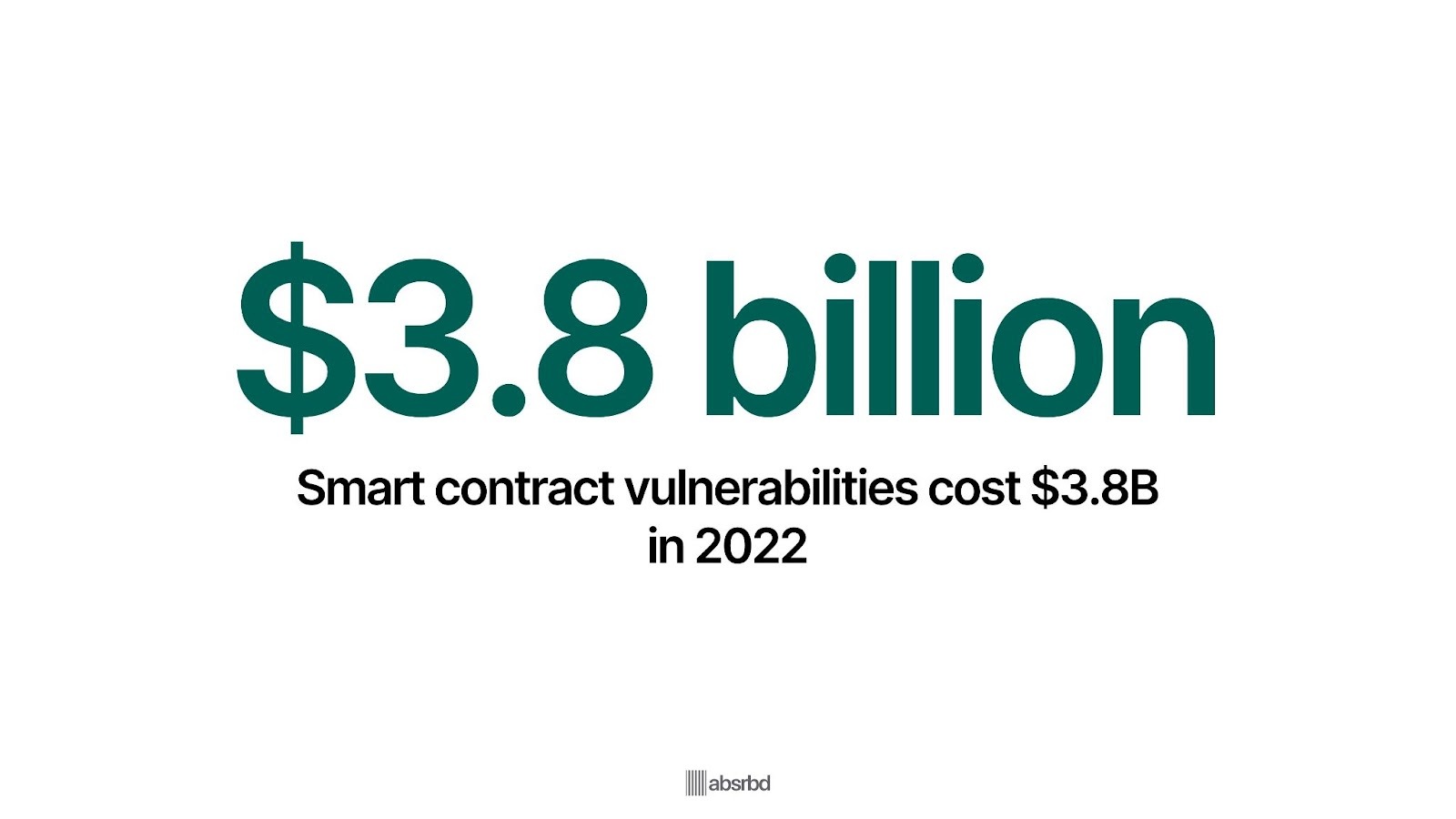
Smart contracts are foundational to liquidity pools, but they are also susceptible to bugs and exploits.
In 2022 alone, hackers stole approximately $3.8 billion from crypto protocols, with DeFi projects accounting for a significant portion of these losses. CBS News
For example, the Ronin Network breach in March 2022 resulted in a $625 million theft, highlighting the scale of potential vulnerabilities Coindesk
These vulnerabilities can lead to significant financial losses for users and undermine trust in DeFi platforms.
As of 2023, over $1 billion has been lost in DeFi due to smart contract exploits, emphasizing the need for rigorous security audits and best practices. The Record
3. Market Manipulation
Liquidity pools can be vulnerable to market manipulation, where malicious actors exploit price discrepancies or weaknesses in the pool's structure.
For example, "flash loan attacks" allow attackers to borrow large amounts of cryptocurrency without collateral, manipulate prices, and profit from the resulting discrepancies.
Such incidents can lead to substantial losses for LPs and diminish the overall integrity of the DeFi ecosystem.
In 2022 alone, flash loan attacks accounted for a significant portion of the $3 billion lost to hacks in the DeFi space. Defi
4. Regulatory Uncertainty: 70% of Countries Lack Clear Crypto Regulations

The DeFi ecosystem operates in a largely unregulated environment, which poses risks for liquidity pools.
This lack of clear regulatory frameworks for DeFi and liquidity pools creates uncertainty for users and developers.
As of 2023, about 70% of countries have not yet established comprehensive crypto regulations [3]. Atlantic Council
This regulatory ambiguity was exemplified by the SEC's action against Uniswap Labs in 2021, which raised questions about the legal status of decentralized exchanges. Forbes
This uncertainty can lead to market instability and discourage participation from both retail and institutional investors, affecting liquidity pool growth.
5. 70% of DeFi Users Don't Fully Grasp the Risks

The complexity of DeFi protocols and liquidity pools poses a significant barrier to widespread adoption.
A survey found that about 70% of DeFi users don't fully understand the risks involved in these platforms.
This lack of understanding can lead to unexpected losses and diminished trust in the ecosystem.
6. Developer Control and Governance Risks
Many liquidity pools are governed by protocols that may grant developers privileged access to smart contracts.
This centralization can pose risks, as developers could potentially manipulate the pool or change its rules without community consent.
For example, incidents of "rug pulls," where developers abandon a project and take investors' funds, have raised concerns about governance in DeFi. Payments Journal
Users should carefully assess the transparency and governance mechanisms of liquidity pool platforms to mitigate these risks.
These challenges highlight the complexities and risks associated with liquidity pools and the broader DeFi ecosystem, necessitating ongoing vigilance and innovation to ensure their stability and growth.
Emerging Opportunities in the Liquidity Pool Market
Emerging opportunities in the liquidity pool market are reshaping the decentralized finance DeFi landscape, offering innovative avenues for growth and investment.
Here are some key opportunities:
Cross-Chain Liquidity Solutions: $27 Billion Market Opportunity by 2028
As blockchain ecosystems proliferate, there's a growing need for seamless cross-chain liquidity.
The development of cross-chain liquidity pools allows assets to be transferred and utilized across different blockchain networks seamlessly.
This innovation enhances liquidity availability and market efficiency.
This market is projected to reach $27 billion by 2028, indicating strong interest in this area. The Business
Protocols like THORChain and Cosmos are at the forefront of this trend, enabling token swaps across different blockchains without relying on centralized exchanges.
Tokenized Real-World Assets Rwas: $16 Trillion Market by 2030
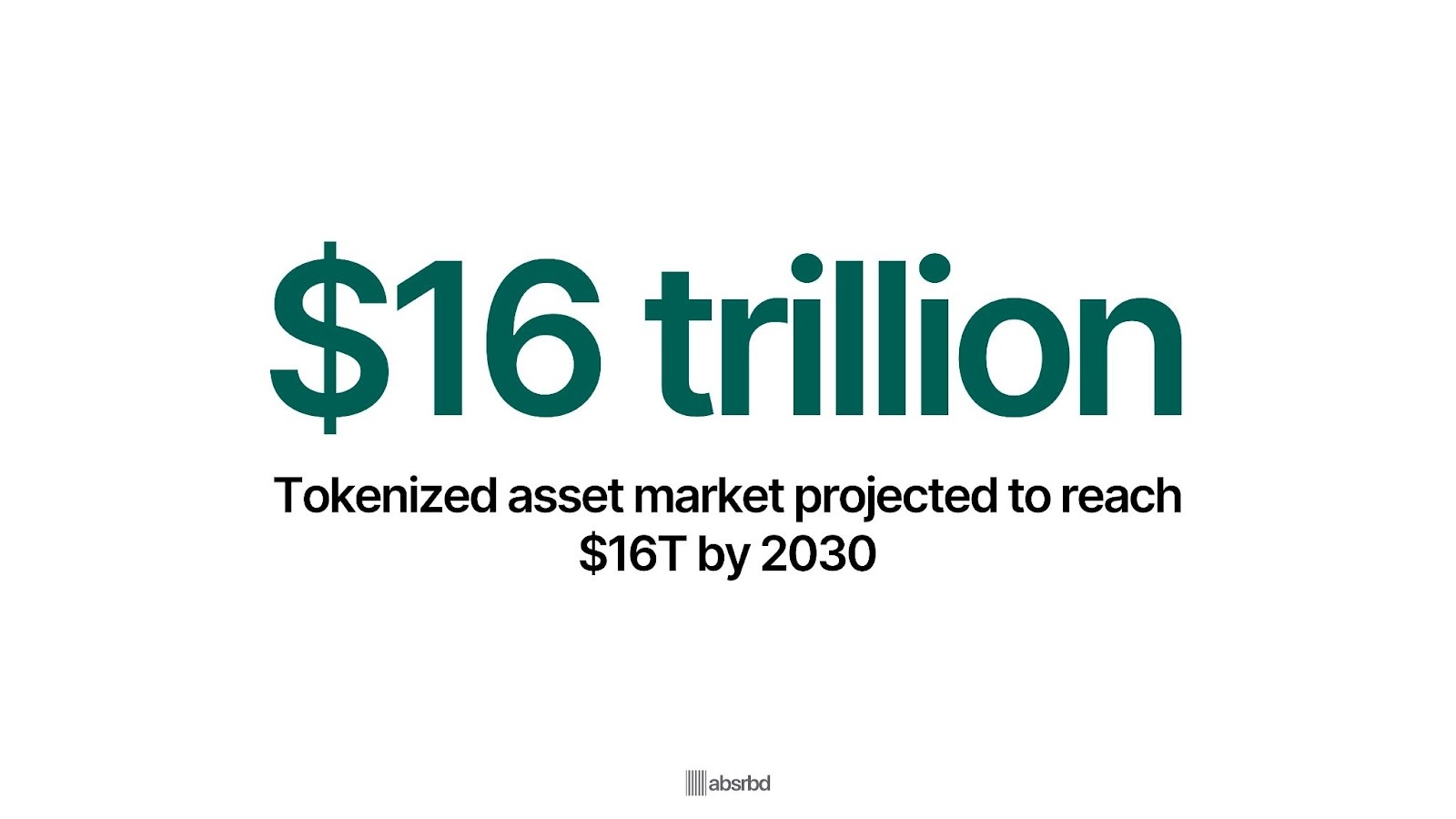
The integration of real-world assets into DeFi liquidity pools represents a massive opportunity.
The tokenized asset market is projected to reach $16 trillion by 2030. Medium
This could bring unprecedented liquidity to traditionally illiquid assets like real estate or fine art.
Centrifuge, a protocol for tokenizing real-world assets, has facilitated the financing of over $200 million in real-world assets through DeFi.
Decentralized Insurance for Liquidity Providers Hits $1 Billion Market Size in 2023
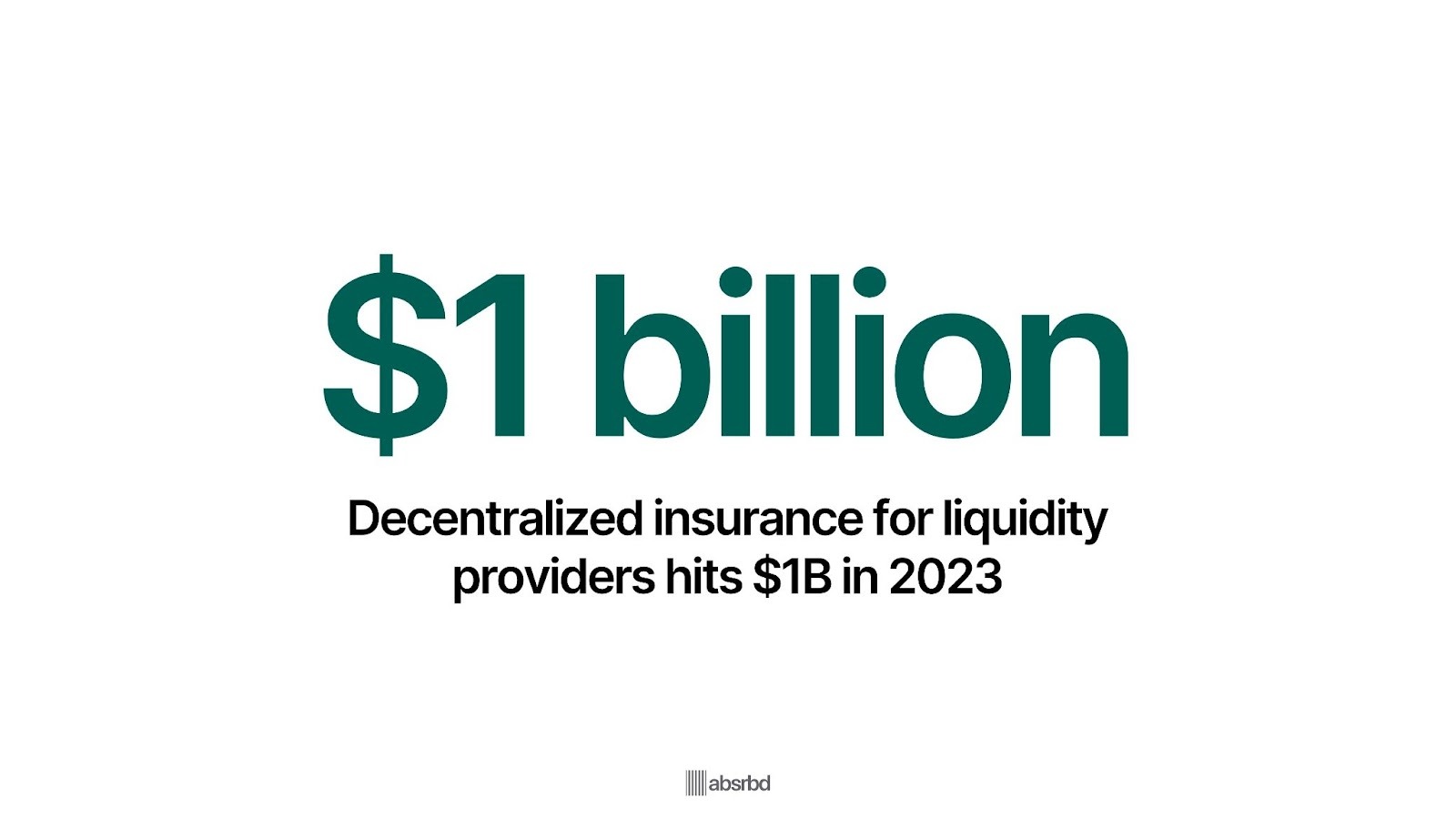
The rise of decentralized insurance is creating opportunities for liquidity pools to back insurance products against smart contract risks.
As the risks associated with liquidity provision become more apparent, there's growing demand for decentralized insurance solutions.
The DeFi insurance market reached $1 billion in 2023. Allied Market Research
For example, Nexus Mutual, a decentralized insurance protocol, has provided $101 million active cover with $277 million capital pool DeFi assets. Nexus Mutual
Gamified Liquidity Provision: To Increase User Engagement by 49%

Gamification of liquidity provision could attract a new demographic of users to DeFi. Early experiments have shown increases in user engagement of up to 49%. DappRader
The initial launch of GameStop Marketplace saw trading volume rise as much as $2 million, with a total of 41,000 sales occurring on the launch day. DappRader
This trend is significant as it diversifies investment opportunities and increases market participation.
Layer 2 Scaling Solutions: 10x-100x reduction in transaction costs
Layer 2 solutions are addressing scalability issues on main chains like Ethereum, offering significantly reduced fees and faster transactions for liquidity pools.
Arbitrum and Optimism, two leading Layer 2 solutions, have seen their TVL grow to $34.5 billion by March 2024.
As a result, the costs paid by users have decreased by more than 90% compared to Ethereum. Medium
Institutional DeFi: $1 trillion opportunity by 2025

As regulatory clarity improves, institutional participation in DeFi and liquidity pools is expected to grow significantly.
The institutional DeFi market could reach $1 trillion by 2025. Yahoo Finance
Aave Arc, a permissioned liquidity pool protocol, has onboarded several institutions and reached $100 million in TVL within months of launch. Coin Bureau
Integration of Advanced Trading Strategies
The integration of algorithmic trading and advanced market-making strategies within liquidity pools is becoming more common.
These strategies can optimize capital efficiency and enhance returns for liquidity providers.
For example, projects like Balancer allow users to create custom liquidity pools with multiple tokens and varying weights, catering to specific trading strategies and risk profiles.
Impact on Stakeholders
Liquidity pools, particularly in decentralized finance DeFi, significantly impact various stakeholders, including liquidity providers LPs, traders, platforms, and the broader financial ecosystem.
The nature of liquidity pools, where assets are pooled together to facilitate decentralized trading, brings benefits and risks for these stakeholders. Here’s an overview of the impact on different stakeholders:
1. Traders and Investors:
Improved Market Access: Liquidity pools provide 24/7 access to trading, allowing users to swap tokens at any time without relying on traditional order books.
Reduced Slippage: For popular trading pairs, liquidity pools often offer lower slippage than centralized exchanges, especially for smaller trade sizes.
New Investment Opportunities: Traders can engage in arbitrage between different pools or exchanges, capitalizing on price discrepancies.
For example: A small investor can trade niche tokens on Uniswap at 3 AM local time, which might not be possible on centralized exchanges with limited trading hours.
2. Liquidity Providers:
- Passive Income: LPs can earn trading fees by providing liquidity to pools, creating a new form of passive income in the crypto space.
- Risk of Impermanent Loss: LPs face the risk of impermanent loss, which can occur when the price ratio of pooled assets changes.
- Capital Efficiency: Protocols like Uniswap v3 allow LPs to concentrate their liquidity in specific price ranges, potentially increasing returns.
An LP providing liquidity to an ETH-USDC pool on Uniswap might earn 10-20% APY in fees, but could face impermanent loss if ETH price fluctuates significantly.
3. DeFi Protocols and Developers:
- Composability: Liquidity pools serve as building blocks for more complex DeFi applications, enabling the creation of new financial products.
- Increased Innovation: The open-source nature of most liquidity pool protocols fosters rapid innovation and iteration in the DeFi space.
- Protocol Revenue: Many DeFi protocols generate revenue through fees on liquidity pool transactions.
Curve Finance's liquidity pools are used by numerous other protocols as a base layer for stablecoin swaps, demonstrating the composability of DeFi.
4. Traditional Financial Institutions:
- Disruption: Liquidity pools challenge traditional market-making and exchange models, forcing adaptation.
- Opportunities for Integration: Some institutions are exploring ways to incorporate liquidity pool technology into their offerings.
JPMorgan's experiment with a modified version of Uniswap for institutional DeFi trades shows how traditional banks are engaging with this technology.
5. Regulators:
- Regulatory Challenges: The decentralized nature of liquidity pools presents new challenges for regulators in terms of oversight and investor protection.
- Need for New Frameworks: Existing financial regulations may not adequately address the unique aspects of liquidity pools, necessitating new regulatory approaches.
The SEC's scrutiny of Uniswap Labs highlights the regulatory uncertainty surrounding decentralized exchanges and liquidity pools.
6. Token Issuers:
- Easier Token Distribution: Liquidity pools provide a straightforward way for new projects to distribute tokens and create initial liquidity.
- Market Dynamics: The presence of a token in major liquidity pools can significantly impact its price discovery and trading volume.
Many new DeFi projects launch by creating a liquidity pool on Uniswap, often paired with ETH or a stablecoin.
7. Blockchain Networks:
- Increased Network Usage: Popular liquidity pools drive significant transaction volume on their host blockchains, potentially leading to network congestion and higher fees.
- Cross-Chain Development: The demand for efficient liquidity across different blockchains is driving development in cross-chain technologies.
Example: The high usage of Uniswap and other DeFi protocols has contributed to periods of network congestion and high gas fees on Ethereum.
Conclusion
By embracing these strategies, investors, developers, and financial institutions can position themselves to capitalize on emerging opportunities and navigate challenges in the rapidly evolving world of liquidity pools.
These smart contract-based protocols have revolutionized trading, market-making, and liquidity provision in the cryptocurrency space, enabling 24/7 decentralized trading and powering innovative DeFi applications.
As the ecosystem matures, we're witnessing trends like cross-chain solutions, integration with traditional finance, and more efficient liquidity management techniques.
However, regulatory uncertainty, smart contract vulnerabilities, and user education remain significant hurdles.
The future of liquidity pools is being written now. Will you be a spectator, or will you help shape its course?
Those who can navigate the complexities, manage risks effectively, and innovate responsibly stand to benefit greatly from the continued growth and evolution of this transformative technology.
Frequently Asked Questions
What is Liquidity?
Liquidity refers to the ease with which an asset, or security, can be converted into ready cash without affecting its market price.It is the manner in which assets are converted to cash quickly and efficiently, avoiding drastic price swings.
What Is Total Value Locked (TVL)?
Total value locked TVL is a metric used in the cryptocurrency sector to determine the total U.S. dollar value of digital assets locked, or staked, on a particular blockchain network via decentralized finance DeFi platforms or decentralized applications dApps. The higher the TVL of a project, the more secure and valuable it is perceived to be.
What is the Purpose of Liquidity Pool?
The purpose of the pool is to facilitate transactions. Decentralized exchanges DEXs use liquidity pools so that traders can swap between different assets within the pool.Liquidity pools work by providing an incentive for users to stake their crypto into the pool. This most often comes in the form of liquidity providers receiving crypto rewards and a portion of the trading fees that their liquidity helps facilitate.



.jpg)
